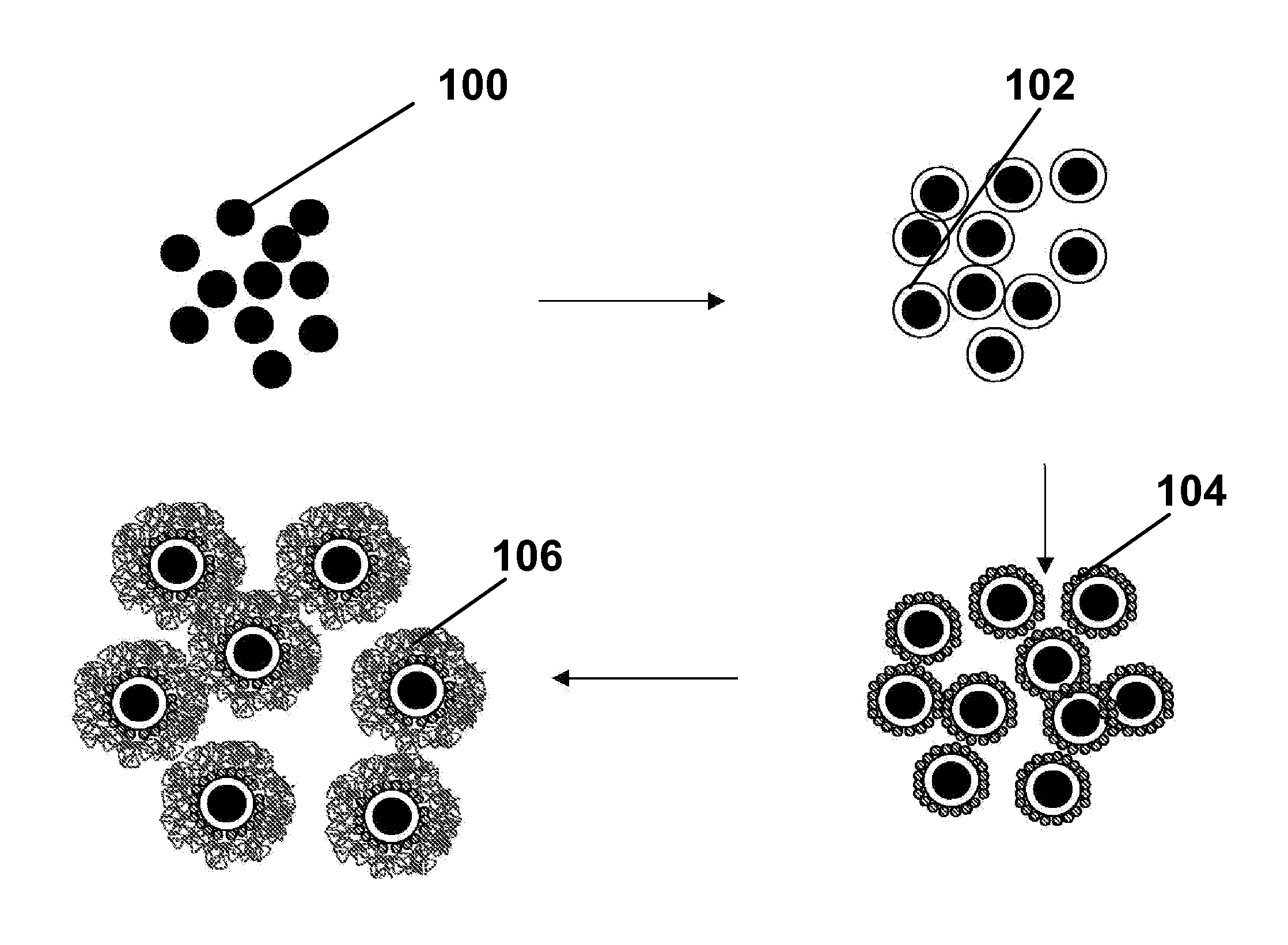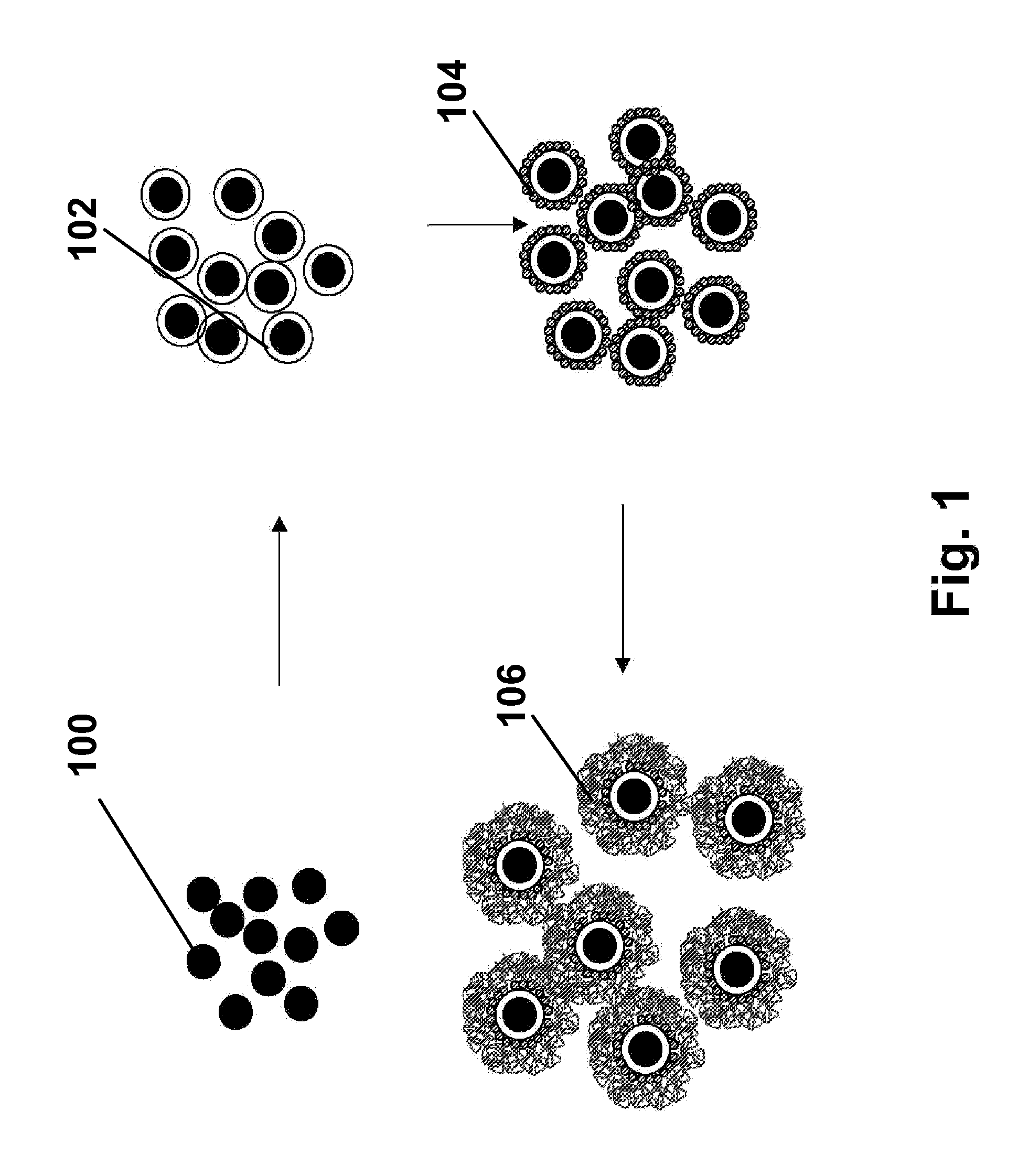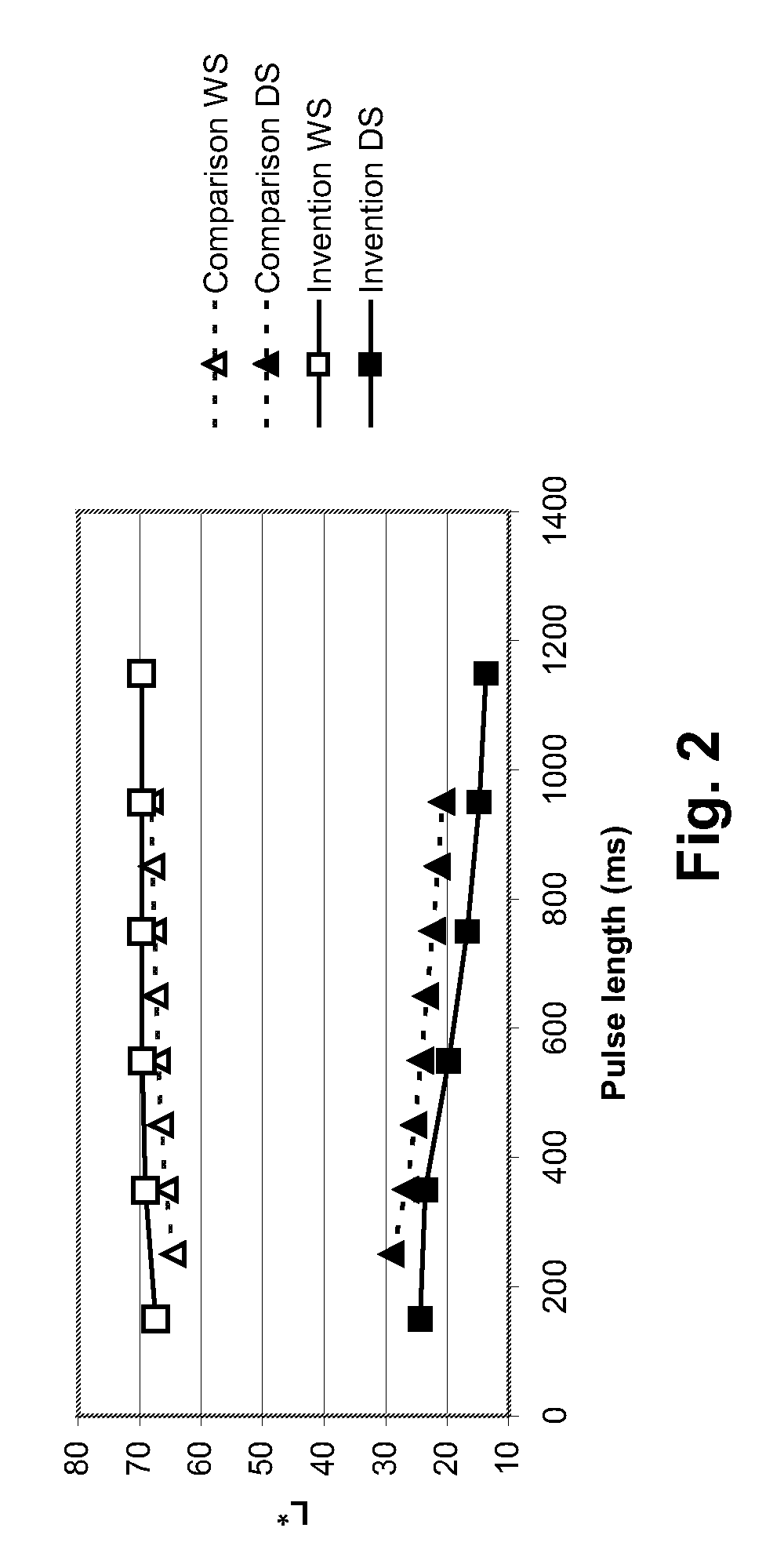Electrophoretic particles, and processes for the production thereof
a technology of electrophoretic particles and electrophoretic particles, applied in the field of electrophoretic particles, can solve the problems of rapid white state degradation, widespread use of these displays, and inadequate service life of these displays
- Summary
- Abstract
- Description
- Claims
- Application Information
AI Technical Summary
Benefits of technology
Problems solved by technology
Method used
Image
Examples
example 1
Silica Coating of Copper Chromate Pigment
[0049]A dispersion was prepared consisting of Shepherd Black 1G (50 g), water (420 mL) and sodium silicate solution (6 mL of a solution containing approximately 14% of sodium hydroxide and 27% of silica, available from Aldrich Chemical Company); the dispersion was sonicated for one hour. The dispersion was then added to a 1 L three-necked flask equipped with a stirring bar, reflux condenser (open to the air) and two addition funnels equipped with needle-valve control stopcocks. The flask was partially immersed in a silicone oil bath and heated to 100° C. with rapid stirring over a period of one hour. During this heating period, the first addition funnel was charged with 0.22M sulfuric acid (150 mL) and the second with a mixture of the aforementioned sodium silicate solution (11 mL) and water (70 mL). After the silicone oil bath reached 100° C., the two solutions in the addition funnels were simultaneously added to the dispersion in the flask ...
example 2
Silane Treatment of Silicated Copper Chromate Pigment
[0050]The silica-coated copper chromite pigment produced in Example 1 was used without further treatment in a silanization process. For this purpose, a mixture of 300 ml of ethanol, 30 ml of water and 40 g of a 40 weight percent solution of N-[3-(trimethoxysilyl)propyl]-N′-(4-vinylbenzyl)ethylene diamine hydrochloride (available from United Chemical Technologies, 2731 Bartram Road, Bristol, Pa. 19007-6893) in methanol was stirred rapidly for 7 minutes, the pigment was added thereto, and the resultant mixture was stirred for a further 5 minutes. The resultant suspension was poured into plastic bottles and centrifuged at 3500 rpm for 30 minutes. The supernatant liquor was decanted, and the silanized pigment re-dispersed in ethanol and centrifuged at 3500 rpm for 30 minutes, and the liquid decanted. The washing was repeated, and the pigment finally dried in air for 18 hours, then under vacuum at 70° C. for 2 hours. The amount of surf...
example 3
Polymer Coating of Silanized Copper Chromite Pigment
[0051]The silanized pigment produced in Example 2 (50 g) was placed in a round-bottomed flask with toluene (50 g) and 2-ethylhexyl methacrylate monomer (50 g). The resultant mixture was stirred rapidly under a nitrogen atmosphere (argon may alternatively be used) for 20 minutes, then slowly heated to 50° C. and AIBN (0.5 g in 10 ml of toluene) added quickly. The suspension was then heated to 65° C. and stirred at this temperature under nitrogen for a further 18 hours. The resultant suspension was poured into plastic bottles, the flask being washed out with ethyl acetate to remove residual product and the ethyl acetate solution added to the bottles. The bottles were centrifuged at 3500 rpm for 30 minutes. The supernatant liquor was decanted, and the polymer-coated pigment re-dispersed in ethyl acetate and centrifuged at 3500 rpm for 30 minutes, and the liquid decanted. The washing was repeated, and the pigment dried in air until a w...
PUM
| Property | Measurement | Unit |
|---|---|---|
| diameter | aaaaa | aaaaa |
| average diameter | aaaaa | aaaaa |
| mean diameter | aaaaa | aaaaa |
Abstract
Description
Claims
Application Information
 Login to View More
Login to View More - R&D
- Intellectual Property
- Life Sciences
- Materials
- Tech Scout
- Unparalleled Data Quality
- Higher Quality Content
- 60% Fewer Hallucinations
Browse by: Latest US Patents, China's latest patents, Technical Efficacy Thesaurus, Application Domain, Technology Topic, Popular Technical Reports.
© 2025 PatSnap. All rights reserved.Legal|Privacy policy|Modern Slavery Act Transparency Statement|Sitemap|About US| Contact US: help@patsnap.com



